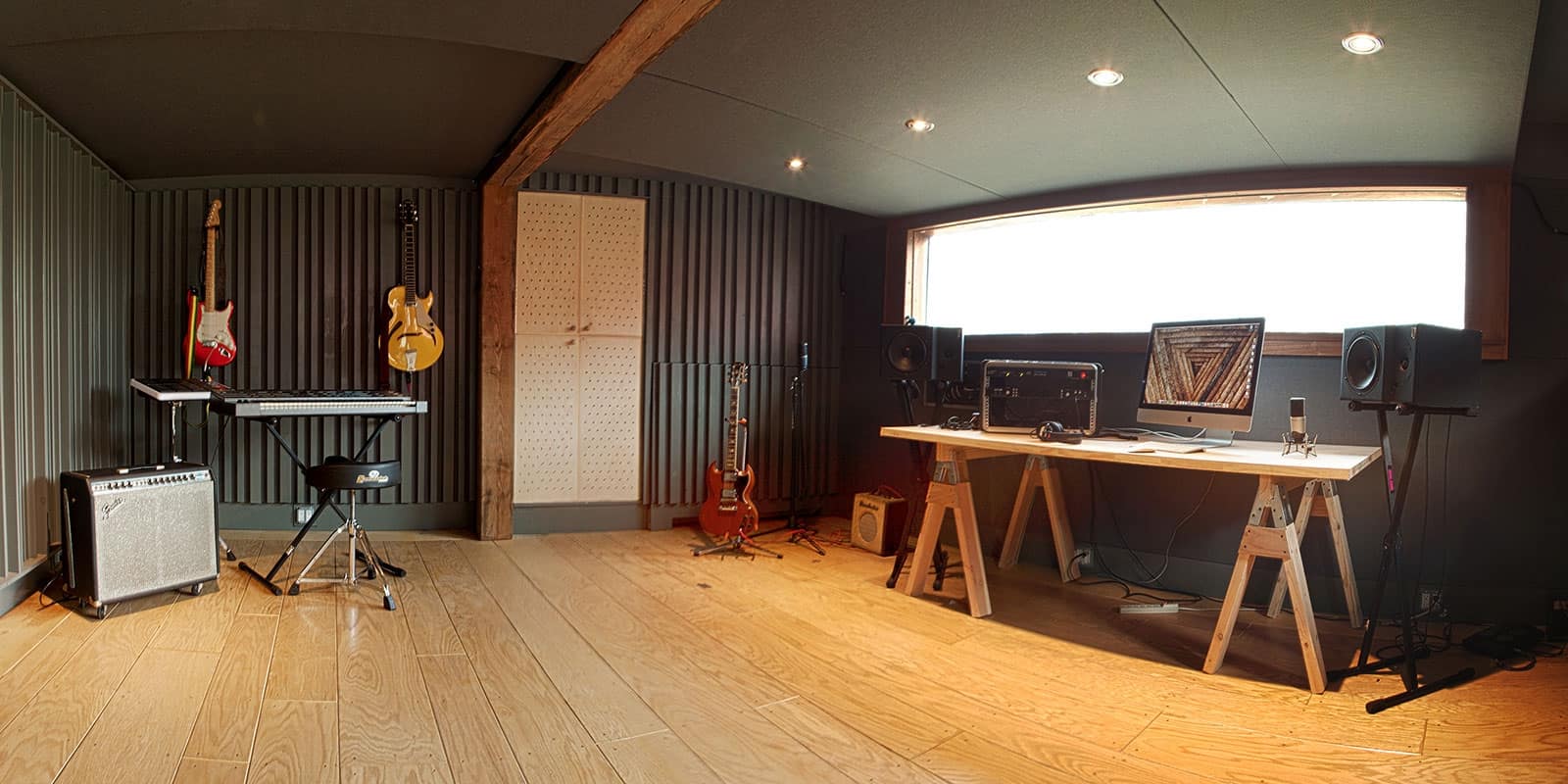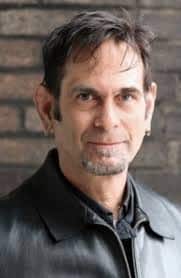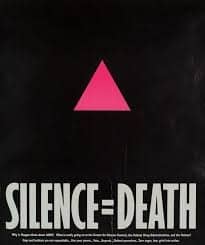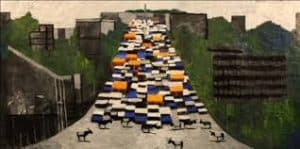Say hello to Pioneer Works 2019 residents
Now in its seventh year, Pioneer Works continues to find trend-defying artists. We wanted to forecast a few artists we’re especially excited to see and hear from. The music residents range from the classic virtuoso of Yumi Kurosawa to the powerhouse vocals of Quenton Stuckey. The visual residents show socially engaged artwork with piercing insight and visuals that keep pulsating when out of view.
Each resident receives a commission from Pioneer Works and generous space in the studio. The glass space fosters a community vibe where cross-pollination is encouraged. The Red Hook community is welcome to meet current residents during PW’s Second Sunday program, where the sprawling space is open to the public 4-9pm. This month’s Second Sunday is Feb 10, and features music by The Sunwatchers.
PW’s 2019 Music Residents
by Christien Shangraw
As they’ve done each year since 2012, Pioneer Works will welcome new artists-in-residence in music throughout 2019. Their mission is to create of a community that transcends traditional disciplinary boundaries and activate alternative modes of thought. The month-long residencies are invitation-only and based on peer review, and this year’s crop of artists reflects the high standards and inclusive spirit of the place.
None of the incoming artists could be described simply as a practitioner of a form, or master of an instrument. They draw variously upon musical forms, instrumentation, recording techniques, critical theory, visual arts, aroma, and other media and ideas, alongside more traditional disciplines such as cinema, feminism, and cultural geography–these things and more in countless permutations.
MV Carbon
MV Carbon (February 2019) incorporates sculptural sound objects, gongs, amplified objects, oscillators, and various hand-constructed instruments with her primary instrument, the electric cello.
“I find music within form by producing patterns onto objects through momentum,” she writes. “The cello resonates like a human voice and I often let it speak for itself. I am interested in activating and enhancing the sonic and architectural features of a given space.”
The effect is to challenge the definition of a musical instrument, and in performance, to “heighten our senses through spatial, psychic, and temporal based explorations.” See MV Carbon at Pioneer Works on Monday, Feb 25, along with Nate Wooley’s Columbia Icefield.
Luisa Muhr
Luisa Muhr (April 2019) is an accomplished vocalist-turned multidisciplinary artist. She’s Austrian by birth and comes to New York by way of a productive artistic tenure in Montreal. She’s a Brooklyn resident and is no stranger to Red Hook, having performed at Jalopy Theater. “Many of my friends perform the all the time. A very homey and dear place. I’d love to go there more often, especially during my Pioneer Works residency when I’ll be so much closer!”
She has no shortage of ideas for the recording studio, with plans to explore it as a rehearsal space and a movement space as well. “My brain thinks in a combination of disciplines,” she says. “I have a bit of synesthesia. I see music visually and sometimes I hear visual experiences.”
She mostly describes her work as a sonic and physical exploration of space, and her list of accomplishments is awfully diverse and lengthy for a 29-year old. She’s collaborated with artists like Ashley Fure, Kenneth Goldsmith, Frank London, Arturo O’Farrill, and John Zorn. Her experimental full-length solo “performance collage” Anna ran at the Austrian Cultural Forum in June of 2018 and just three months later she performed in the world premiere of Ashley Fure’s “Filament” with the New York Philharmonic at Lincoln Center, as part of the vocal-movement ensemble Constellation Chor (lead by Marisa Michelson). She’s currently developing an opera with six-time Grammy winner Arturo O’Farrill, and she’s performed at venues such as The Jewish Museum, The Stone, Park Avenue Armory, Judson Memorial Church, The New School Glass Box Theater, and the Albright Knox Art Gallery. And she shows no sign of slowing down now.
“I will be working a lot and very hard. I always do, honestly. The only thing is that I often don’t really sleep enough and sometimes have to miss out on a lot of amazing things that are happening. But then again, constantly working –making art– is my life, my main center, really.”
Luisa’s own performing arts company is called FENGARI Works, through which she runs her series Women Between Arts, which forwards interdisciplinary performances by women and non-binary artists. “I run Women Between Arts through FENGARI Works,” she says. “But as of right now both are just basically one-woman-run projects serving as platforms to create art and provide opportunities for artists.”
Ziemba
Ziemba (March 2019) is the performance moniker of NYC-based musician, composer, perfumer, and feminist geographer Rene Kladzyk. She reports no memories before singing. “My mom and dad said I was singing when I began talking. I feel very fully myself when I’m singing; it’s fundamental to my identity.” While Ziemba’s work seems organically nondiscriminatory regarding what she allows it to be impacted and informed by, the principal three-way collision in her work seems to have happened among vocal performance, feminist geography, and scent.”
When asked about how she first discovered the possibilities inherent in combining conventionally separate disciplines such as sound and smell, or smell sound, and movement, geography and feminism, etc., she offered that, “I think that perhaps my background in geography is responsible for me never really considering these disciplines as separate.
In geography, for example, you can study any phenomenon on earth and it can be geography, which is really about perspective; you’re paying attention to spatial and temporal connections. I studied this with Amy Lobben, a geographer who works a lot in neurology, how the brain processes spatial information. I worked with her on tactile mapping software for blind people, who develop spatial maps differently than the rest of us, who see the world in a very ocular-centric way. It wasn’t a direct mentor-type relationship–I was just a research assistant, but it’s insinuated itself into my work. Of course I like performance because it’s an opportunity to create while immersed, and immersive experience. And fragrance was kind of a new discovery for me, something I didn’t grow up with or anything. I first explored fragrance when my dog was dying and I used aromatherapy and found that it really worked.”
Ziemba has a newly-released song and video for, “El Paso,” which explores the underground history of the U.S./Mexico border. Her debut album, Hope Is Never, was accompanied by scents that bloomed from the flowers that grew in the garden of her childhood home. She has composed for the Fire Organ, a fascinating contraption built by Guerrilla Science, who fabricate art/science/education inventions for diverse factions from The Smithsonian to Burning Man. They call the Fire Organ, “the ultimate analog sound visualizer.” Using any sort of sound input, it demonstrates the shape and movement of sound waves through a dance of flames. It’s worth checking out.
During her month-long residence, Ziemba will be writing new material and working on fragrances, but mostly recording new music. “I don’t want to be more specific than that because I don’t want to let anybody know what I’m up to yet.” After a pregnant pause, she added, “Well I will say this. There will be a full choir and a pretty eclectic group of musicians–harp, bass, clarinet, flute. synthesizers. There will be multiple fragrances, many costumes. She’ll perform at the Second Sunday on April 14th, presenting the first full-length, multi-sensory musical performance of her new album, ARDIS.
Lucas Crane
- Lucas Crane says that the simplest, most accessible way to understand him is as a “tape-manipulation artist.” He started recording sound on tapes (actual tapes, like cassette tapes, remember those?) when was in college & has continued to do so for more than a decade. It means he has to lug around a huge crate of tapes all the time, but he says that this laborious physicality is a critical part of his process. He describes it as a kind of low-tech approach to memory and sound as it lives as a diary of reality.
“My tape equipment requires me to be in a certain rhythm, actually pick up a tape and insert it into the machine, and physically engage with the past and the present at once – there’s less of the multi-layered user interfaces that you get with today’s technology. It’s like an interweaving of time itself.”
Mr. Crane was raised in the Gowanus section of Brooklyn, so his residency at Pioneer Works is a homecoming of sorts for him.
“I live in Brooklyn now and I’m from Brooklyn originally. I spent a lot of time in Red Hook as a child, so when I’m at Pioneer Works it’s like I’m visiting my childhood home, back when Brooklyn was gnarly and my Dad had an art studio in the neighborhood. It’s great.”
He has an intense way of talking about his work, which lately seems to stem from a deep reading of the work of William S. Burroughs in general, and the Nova Trilogy in particular. In this trilogy, as in his most famous work, Naked Lunch, Burroughs undertook a radical reinvention of the narrative form that used the “Cut-Up Technique” that Burroughs developed with artist Brion Gysin. The technique involves cutting up text and rearranging it to form a new text, a sort of association by disassociation. The relationship to splicing and re-ordering sound recordings, particularly analog ones, is had to miss.
“The bare fact of being able to record something, cut it, insert something into it – the physicality of being able to insert the reality of one time into another time is pure magic to me – even though we’re all walking around with sound studios in our pockets we take it for granted; we often don’t know how to distinguish where the reality of the work begins and ends. I mean, the needs of the machine were different at the time it was invented.”
While he’s in residency at Pioneer Works, he’ll focus on Decoder 2017, a piece directly informed by his study of Nova Express. “It has three parts,” he says. “Each associated with one of the three parts of Nova. Our goal is to use Pioneer Work’s studio and facilities to get as good a recording as we can of The Ticket That Exploded [the first novel in the trilogy]. Doing it live we never get good recordings; we always f- at least one little part of it up!
Decoder 17, which will be featured at Pioneer Works’ Second Sundays event on July 14, 2019, is, he says, “as much about engaging with my physicality at the time of creation as it is about anything.
As a veteran of several bands, including Wooden Wand and the Vanishing Voice, he seems like less a conceptualist and more engaged with the idea of what he calls, “being in the moment and doing the thing on stage as it happens. You don’t have to do a lot. I appreciate being able to come up with the work in these contexts as an artist.”
PW’s 2019 Visual Art Residents
Avram Finkelstein
The work of AIDS activist and artist Avram Finkelstein has always been political. His parents were members of the American communist party when he grew up in Red Hook Houses.
“My grandmother was to the left of Ethel Rosenberg.”
As a co-founder of Silence=Death (1987-1993), Finkelstein created collaborative, socially-engaged images and performances that effectively brought global attention to the nation’s complicitness in the growth of HIV/AIDS.
The group’s artefacts are now represented at MoMA, The Met, The Whitney, and countless other museums. Two years ago, UC Berkeley Press published Finkelstein’s “After Silence: A History of AIDS Through its Images,” which complicates the victim-to-hero tale of the AIDS crisis by looking at the continued prosperity of big pharma.
His experience of art-making in turbulent times drew the curator and sculptor Will Corwin to interview him for Clocktower Radio, the regular broadcast housed in Pioneer Works. In 2017, he joined PW and The Yes Men WTF: What We We Do Now?. He toured with PW founder, Dustin Yellin, the mammoth art space.
“I was so impressed with how concrete and comprehensive his ideas were about what might constitute an at space and the responsibilities it has to participate in the communities that surround it.”
He plans to make good use of PW’s extensive space and technology.
“The space at Pioneer Works is so generous and the labs are exactly what I need to produce the body of work.”
Finkelstein calls the work a sort “Jacquard Billboard,” a blend of the early 18th century Jacquard Loom that greatly accelerated the weaving process.
“The Jacquard loom was like a punch card system,” Finkelstein says. “It worked on a zero and ones that early computer programming worked on. It’s not unrelated to how we think of digital production, but this particular work is about gender.”
Finkelstein will be continuing the work of forwarding voices from previous generations, as his past oral history projects did.
“I think of our social spaces as folk spaces. They are communal spaces whether we like that or not, or the way it represents how we think about communities. The handing down of traditional ideas about ourselves is very much a part of how social spaces function. As a Jew and as a queer, it’s particularly true. How we think about our elder tribespeople, for lack of a better description, is an essential part of how we constitute our identities.”
Ezra Wube
The Ethiopian, Brooklyn-based mixed media artist Ezra Wube makes beautiful juxtapositions of time and place. After finishing graduate studies at Hunter College, Wube made “Indamora” (2009) a mysterious stop-action film where Sumi ink is poured on glass to make quasi-words that are then poured away. Construction workers in bright right and yellow move about behind a window made opaque through acetate.
“The purpose of documentation is not to preserve,” Wube writes on his website, “but to serve as a bridge, connecting the past with the present, the internal with the external.”
The process of photographing, moving the subject, then photographing again, of course, demands a lot of patience. He made it slightly more complex and figurative with he decided to paint memories of his commute against a wall then produce a stop-action film in the end. The result “At the Same Moment” (2013) resonated with thousands when it was screened on several major screens at midnight, a project of Times Square Arts.
Sounds became more rushing and integral to his work in “Pattern Synthesis” (2018). Designed for Manhattan’s Children’s Museum, the animation takes hundreds of patterned canvases, mostly of white, black, and silver, and adds the sound of a lobby and mysteriously that of the ocean.
Wube is a global connector whose work has a presence at community-driven sites like Pioneer Works by in South Korea, France, Senegal, and Brazil.
Maia Chao
The interdisciplinary artist Maia Chao studied cultural anthropology, and it shows. Whether dragging the desk of a white guy on his computer (Myth of Meritocracy, 2018)) or naming blobs of glass after routine and asinine questions part of the hiring process (Hiring, 2017), Chao’s performances highlight the lunacy of behavioral scripts. 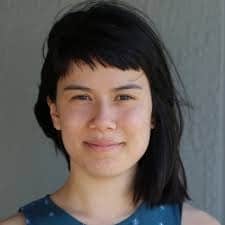
In “Point of Purchase (POP),” Chao acts as a smiling service attendant, responding to people through windows that mirror the “customer,” asking for their keys and just to shrink wrap them, handing people a nonsensical brochure with the headline — “try out these tips to improve your written identity!”
Her work is coated with genteel absurdism that initially downplays the insight it locates. Chao routinely captures the absurdity of many rituals that seek to mask the overwhelming inequalities in daily actions. There’s an ickiness that begins to sink into the viewer, a weightfulness upon realizing Chao is describing their everyday.
Chao describes herself as one who prefers to work with people who don’t frequent art museums; it’s a social stance that meshes well with the community-oriented vibes of Pioneer Works.
A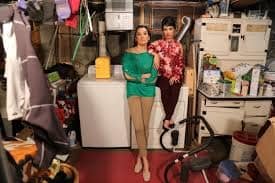 long with Josephine Devanbu, the RISD Presidential Scholar started, “Look at Art. Get Paid,” a trenchant evaluation of who really has access to museums and what purpose they serve.
long with Josephine Devanbu, the RISD Presidential Scholar started, “Look at Art. Get Paid,” a trenchant evaluation of who really has access to museums and what purpose they serve.
Chao notes that free days tends to serve people who already are positioned to visit a museum. The project gives cash to people who rarely visit museums as a “guest critic,” all with the hope of asking this vital question: “How can the museum be enlightened by those who are not presently served by it?”
The ethos of her work couldn’t find a more productive home than Pioneer Works.
Check out Pioneer Works’ at www.pioneerworks.org for more information on the artists-in-residents in music, technology, and visual arts, and for one of their great gifts to Red Hook and the surrounding community of Brooklyn and New York City in general: Second Sundays.
Second Sundays is a free event series presented on the second Sunday of every month featuring open studios with current artists in residence, live music, exhibitions and participatory programs exploring art, science, technology and education.

